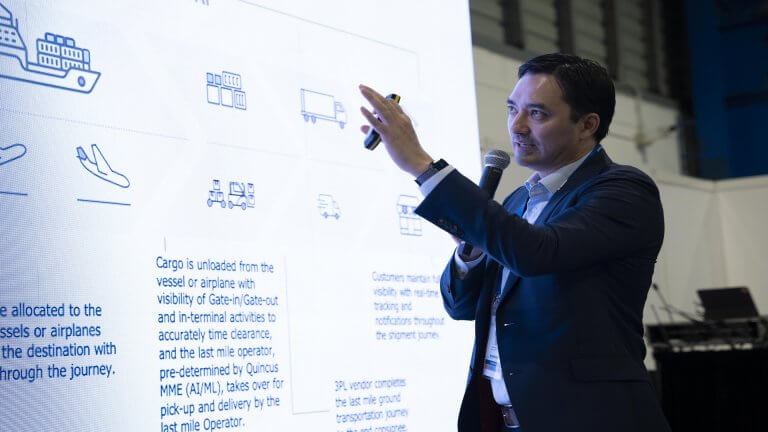
Hiring & Culture: The Key Role of Talent in the Future Supply Chain
Despite the rapidly growing pace of automation and other intelligent technologies in the supply chain, the need for supply chain talent is not going anywhere. From network planners to warehouse managers, dispatchers, and many other roles, human judgment, interpersonal skills, and adaptability remain indispensable in dealing with the myriad complexities of modern logistics.
However, surveys show that only 27% of leaders believe they have the talent needed to meet current supply chain performance requirements. There is an immense opportunity for talent professionals to shine by closing the talent gap for current and future needs.
Invest in the next generation of talent
Supply chain talent professionals face the persistent question of when to prioritize soft skills over hard skills in the hiring process. As many as 80% of supply chain leaders surveyed agreed that technical competencies for areas like risk management, statistical modeling, and multi-tier management are essential in supply chain employees. While experience and qualifications are equally important when evaluating these hard skills, especially if they are so integral to a role as to be non-negotiable, assessing a candidate’s ability to manage and collaborate is far less straightforward.
The same survey identified managing global and virtual teams, persuading and communicating effectively, and leading and developing others as competencies many supply chain organizations still lack. These present a problem for supply chain talent professionals as no pre-hiring test or assessment can replace the truth of on-the-job performance. However, taking a behavioral approach can reveal crucial insights during the interview process. Putting a candidate in real-world scenarios and keeping questions open-ended gives recruiters a clearer picture of how a candidate thinks. Recruiters could ask how a candidate handled a problematic teammate in the past or how they would create a framework for managing a geographically dispersed team of supply chain planners. In addition, this helps spot ‘lone wolves’–high performers who lack the people skills to collaborate or lead–early in the talent pipeline.
This approach operates off the principle that past behavior is an indicator of future performance. Soft skills such as empathy, an open mindset, resilience, and the willingness to learn can be as critical as technical competencies in future supply chains as they become increasingly connected, and cross-functional collaboration grows in importance. Aside from reducing the cost of bad hires, the benefits of this approach go beyond the current generation of employees. As the failure to lead and develop others could rob a company of future talent, prioritizing soft skills and leadership competencies in hiring is arguably an investment no supply chain organization can afford to overlook as the industry continues to modernize.
Build a culture of learning and feedback
Like hard skills, soft skills can be taught, which underscores the importance of learning & development programs in supply chain organizations. L&D has a long history of helping to keep employees motivated by assisting them in growing both personally and professionally. Yet, while many L&D initiatives tend to revolve around instilling basic skills such as presentation, communication, and even Excel use, supply chain organizations have a tremendous opportunity to take this further.
By leveraging job rotation, supply chain talent professionals can give employees opportunities to explore roles outside of their scope and develop new career pathways through the supply chain. Offering this option creates a pool of ready-made internal candidates, shortening the hiring cycle for future vacancies while keeping talent within the organization. Training supply chain staff in related skillsets can also pay great dividends. A consumer-goods multinational proved this when it enabled employees to upskill with self-taught coding skills acquired through L&D resources. Using these skills, the company’s supply chain planners developed custom RPA and machine learning applications that resolved business problems without external technology partners while boosting retention in the process.
Apart from L&D, another vital element that supply chain talent professionals should build into the culture is feedback. Traditionally, supply chain personnel have been I-shaped, the vertical stroke of the I representing deep specialization in a particular discipline. Supply chains increasingly need T-shaped professionals, distinguished by the horizontal stroke above the I, denoting the ability to collaborate across multiple functions. Growing this horizontal stroke hinges on reshaping company culture to encourage employees to get comfortable giving and receiving feedback, which must be frequent, or even real-time. Quarterly or even monthly feedback cycles are no longer sufficient to keep up with supply chains as they move towards a future of agile, real-time operations.
From focusing on soft skills to nurturing a culture that promotes constant learning and internal mobility, there is much that talent professionals can do to help build a supply chain organization robust enough to meet the demands of the Industry 5.0 era.
Sources:
https://www.forbes.com/sites/stevebanker/2021/03/10/supply-chain-talent-is-more-important-than-ever/
Subscribe to keep up with our latest news









